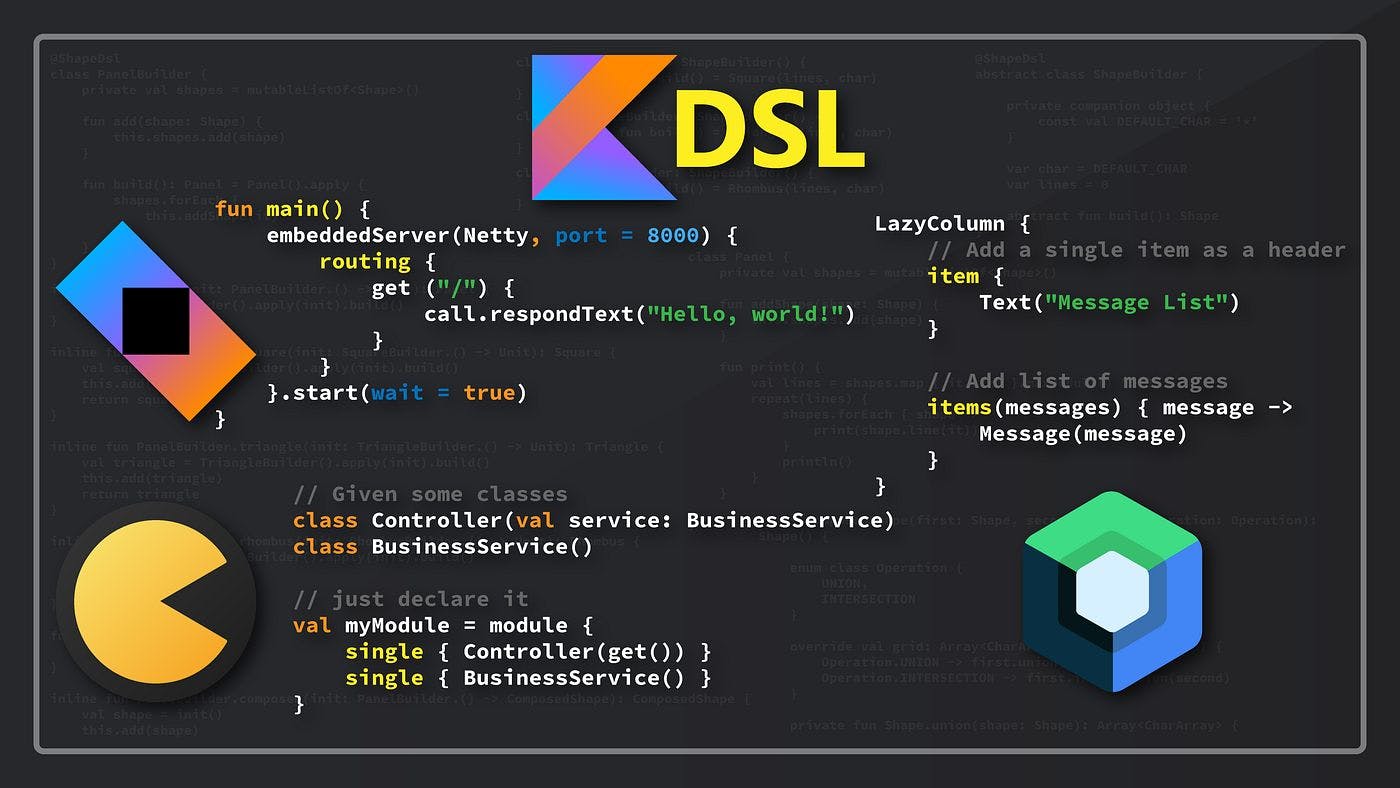Domain-specific languages, or DSLs, are languages specialized for a specific part of an app. It is used to extract a part of the code to make it reusable and more understandable. As opposed to a function or a method, DSLs also change the way you use and write code.
To make a DSL means to change the syntax of that specific part of the code. In Kotlin, this is achieved by using lambda and extension functions, and expressions, to remove a lot of boilerplate code and hide the internal implementation from the user.
For example, I will take a newly created project and I will use the example to translate it from Groovy to Kotlin step by step.
- The first thing we will do is change the file extension from
.gradleto.gradle.kts
- Changing plugins
plugins {
id("com.android.application")
id("org.jetbrains.kotlin.android")
}
- Let's go to the android block and change the fields
namespaceиcompileSdk:
namespace = "kz.azamat.androidlessoncoroutines"
compileSdk = 33
- Changing
defaultConfigblock:
defaultConfig {
applicationId = "kz.azamat.androidlessoncoroutines"
minSdk = 23
targetSdk = 33
versionCode = 1
versionName = "1.0"
testInstrumentationRunner = "androidx.test.runner.AndroidJUnitRunner"
}
- Changing for
buildTypesblock:
buildTypes {
getByName("debug") {
isDebuggable = true
}
getByName("release") {
isMinifyEnabled = false
proguardFiles(getDefaultProguardFile("proguard-android-optimize.txt"), "proguard-rules.pro")
}
}
compileOptionswill be changed to java and make a change forsourceCompatibility,targetCompatibilityand forkotlinOptions:
java {
sourceCompatibility = JavaVersion.VERSION_1_8
targetCompatibility = JavaVersion.VERSION_1_8
}
kotlinOptions {
jvmTarget = "1.8"
}
- Finally change the dependency section:
dependencies {
implementation("androidx.core:core-ktx:1.7.0")
implementation("androidx.appcompat:appcompat:1.6.1")
implementation("com.google.android.material:material:1.9.0")
implementation("androidx.constraintlayout:constraintlayout:2.1.4")
testImplementation("junit:junit:4.13.2")
androidTestImplementation("androidx.test.ext:junit:1.1.5")
androidTestImplementation("androidx.test.espresso:espresso-core:3.5.1")
}
Eventually, our code looks like this:


